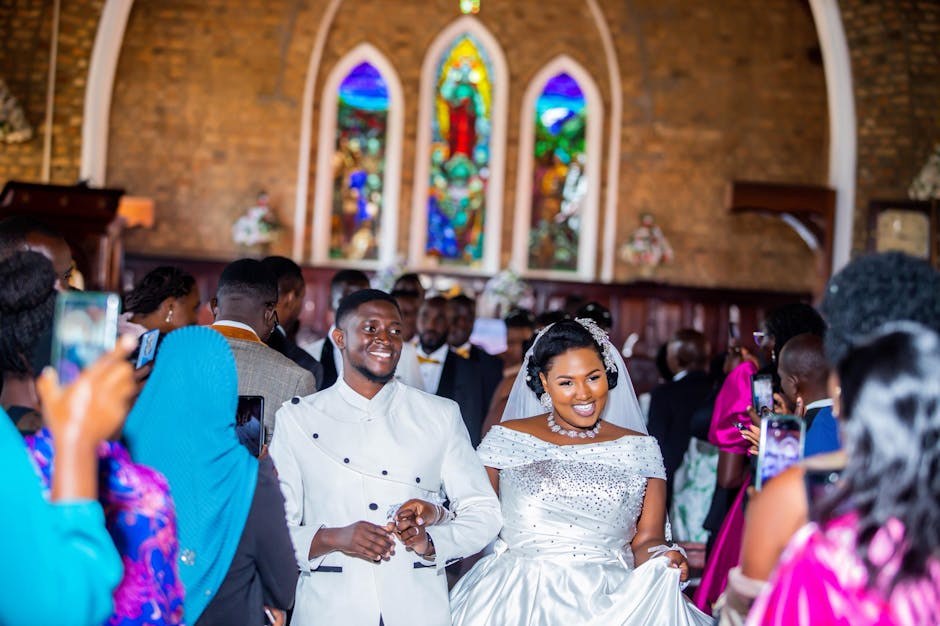You’ve been together long enough that daydreams have turned into real conversations, and a single word keeps circling your thoughts – propose. The idea can feel thrilling and unsettling at the same time. Before you fixate on rings and photo-worthy moments, step back. Think about the partnership you’re actually building, how you communicate, and whether your values match. A wedding is a single day; a marriage is the daily practice of choosing one another – especially when life isn’t filtered or tidy. This guide reshapes the usual checklist into something more grounded: first, a reality check about marriage; second, how to read his pace and priorities; third, practical signs that he may be preparing to propose; and finally, gentle ways to encourage momentum without pressure.
Marriage deserves clear eyes
Romance stories make commitment feel effortless, yet real partnership is sustained by patience, repair, and shared effort. The glow of an engagement fades fast if the relationship underneath it is shaky. Ask yourself who you’re marrying – not just whether he might propose. Are you kind to one another during stress? Do you both show up for difficult conversations? Can you collaborate on money, time, and boundaries? The answer to those questions matters more than any timeline.
It’s also fair to admit that marriage will not magically fix anything. Habits – good and bad – follow you across the threshold. If you’re hoping an engagement will quiet uncertainty or cure recurring conflicts, name those concerns now. The healthiest “yes” rests on shared readiness rather than urgency.

How to gauge whether he’s thinking long term
When people move toward major commitments, they rarely do it because they were cornered. They do it because their internal timing, goals, and resources line up. That timing can be hard to see from the outside, but you can read how he’s organizing his life. Listen for plans that stretch into the future – study, career, savings, family expectations, even where he imagines living. If he’s mapping the years ahead with you at the center, he may be on the path to propose. If all his plans end at “next weekend,” the timeline could be longer.
Peer circles matter, too. Friends model what’s normal – or at least what feels possible. When his closest people are pairing off, moving in, or celebrating engagements, he absorbs those cues. That doesn’t mean he’ll mirror them, only that commitment becomes part of his mental landscape. Notice, don’t nudge. Understanding his influences helps you interpret his pace without turning it into a contest.
Signals he may be preparing to propose
None of the clues below prove anything on their own. Taken together – and in the context of honest talks you’ve already had – they can suggest that he’s getting ready to propose. Use them as conversation starters and as a way to check your own expectations.

He openly brings up marriage. Wedding talk doesn’t make him flinch anymore. He asks what commitment looks like to you, and he’s curious about ceremonies, timelines, or what a shared future might hold. Casual mentions are one thing; consistent, comfortable threads are another – and they often precede a decision to propose.
He imagines life with children – or without – in concrete terms. If the two of you want kids, he wonders how you’d parent; if not, he still frames the future as a deliberate choice you’ll make together. Big-picture family talk is a common step toward choosing to propose.
Housing enters the chat. He compares neighborhoods, talks leases and mortgages, or floats the idea of living together as a practical next chapter. Logistics are the unglamorous prelude to propose – and they’re important.

He’s briefly elusive for good reasons. Odd errands and vague explanations can be unnerving, but sometimes they’re cover for ring shopping or coordinating a moment. Reserve judgment until the pattern makes sense; planning to propose can make even steady people a little cagey.
Surprise plans appear out of nowhere. He books a dinner at a meaningful place or suggests a dress-up night “for fun.” It could be romance for its own sake – or a setup to propose. You won’t know until you’re in it, so enjoy the evening on its own merits.
His spending shifts. Frugality arrives with little explanation – fewer splurges, more restraint. Saving quietly is a classic prelude to propose, especially if he values making the moment special.
He consults your inner circle. Coffee with your siblings, a text thread with your best friend, a visit with your parents – these check-ins signal that he’s gathering insight and support. Many people still love the tradition of asking for a blessing before they propose.
He’s acting just a bit off. Practice speeches, secret tabs, nerves – they all leak into daily life. If he’s steady in every other way, minor weirdness can mean he’s getting ready to propose.
Devices suddenly have privacy. Screen tilts and locked folders aren’t always red flags. They can hide stone-simple evidence – shipping notices, jeweler emails, calendar invites – that would spoil a plan to propose.
He’s adorably nervous. Even confident partners fumble when stakes feel high. A little extra fidgeting or overthinking often shows up right before people propose.
Affection is abundant. Extra hugs, lingering compliments, and warm check-ins can be a way of savoring the moment before he proposes – or simply his way of deepening connection.
Kindness turns intentional. Acts of service and thoughtful gestures stack up. When someone plans to propose, they often lean into everyday care as well as grand gestures.
Your family and friends act giddy. Secrets are hard to keep. If your crew becomes conspicuously excited, they might know he means to propose and are trying not to spoil it.
Travel research gets suspiciously detailed. He explores destinations and viewpoints, times of day and weather patterns. Scenic trips create built-in backdrops – a tried-and-true setting to propose.
Declarations of love get specific. Instead of general “I love you” statements, he names the qualities he cherishes and the life he envisions – a strong hint that he’s close to propose.
He studies your jewelry. Suddenly he notices metal tones, stone shapes, or the rings you already wear. People rarely develop that interest unless they’re collecting data to propose.
He floats the idea of a joint account or shared budget. Combining money in any form signals a long-term frame – the kind of planning that often precedes a decision to propose.
Commitment shows up in language and behavior. He speaks in “we,” defends boundaries that protect the relationship, and invests time in rituals that matter – the daily habits that make it natural to propose.
He tracks your schedule. Not in a controlling way – in a practical one. He’s looking for an open evening, a free weekend, a moment he can stage. That calendar attention often means he intends to propose.
Weddings become research. At other people’s ceremonies he’s observant, curious, even sentimental. Inspiration can be fuel when someone is preparing to propose.
You stumble across a ring. If you happen upon a box tucked in a jacket or drawer, the mystery is solved. Put it back, breathe, and let him propose when he’s ready – you’ll both enjoy the reveal more.
Practical ways to encourage a proposal without pressure
Want to move things forward while honoring both of your timelines? These strategies keep dignity and intimacy intact. They’re not tricks – they’re ways to align hopes, reduce anxiety, and create the conditions where choosing to propose feels natural rather than coerced.
Stay cool under pressure. No one likes feeling cornered. When you protect the ease between you, you make it safer for him to propose on genuine readiness rather than panic.
Say what you want. Clarity is kind. If marriage matters to you, voice it plainly – without ultimatums. He can’t respond to a desire he doesn’t hear, and openness often sets the stage to propose.
Stop competing with other couples. Your story is your own. Comparing timelines creates friction, not intimacy, and rarely inspires anyone to propose faster.
Offer a horizon, not a maze. Vague “someday” talk invites drift. Framing the future – even lightly – gives both of you a reference point as you approach the choice to propose.
Let him feel your value. Appreciation, reciprocity, and a life that’s more joyful together than apart help commitment feel obvious – which is often what makes someone excited to propose.
Share more of your inner world. Trust grows when you trade vulnerabilities and invite each other into daily realities. Emotional closeness shortens the path to propose.
Spend time with healthy marriages. Seeing couples who still laugh, argue fairly, and have fun demystifies commitment and makes it less scary to propose.
Build in stages. Cohabiting, adopting a pet, or merging a few routines are gentle experiments that teach you how you function as a team – often the confidence needed to propose.
Keep your independence. A rich individual life – friends, interests, goals – is attractive and stabilizing. Autonomy lowers pressure and paradoxically makes it easier to propose.
Maintain friendships across genders respectfully. Security plus healthy boundaries signal that you both choose the relationship – a mindset consistent with deciding to propose.
Be a thoughtful partner. If you already have something great, ask what would make it even better. Intentional care turns the idea to propose from scary to obvious.
Offer steady support. Being present for practical needs and emotional storms deepens trust – the quiet backbone behind a plan to propose.
Cheer him on. Celebrate his wins and stand with him in setbacks. When progress feels shared, many people feel moved to propose.
Plan romance for him, too. Dates don’t have to be one-sided. Curate an experience he’ll love – it reminds you both why the relationship is worth the leap to propose.
Be honest about your timeline. Gentle transparency about what you hope for – and why – keeps the path to propose collaborative rather than adversarial.
Avoid complacency. Ruts can dull urgency. Refresh routines, keep learning, and invest in your own growth. Vitality draws people closer – including toward choosing to propose.
Don’t frighten him with wedding micromanagement. Detailed fantasies – when there’s no engagement yet – can feel like pressure. Keep your vision light until it’s actually time to propose.
Show why you’re a great life partner. Reliability, warmth, humor, and loyalty make a compelling case – one that quietly answers the question of why to propose.
Give breathing room if you’re stuck. A small step back can create clarity. Space isn’t a game; it’s an invitation to reflect – and sometimes, to propose.
Consider proposing yourself. Traditions are flexible. If you’re ready, create your moment and ask. You know your relationship best – and you can still craft something tender, and very you.
Important reminders while you wait
These points keep you centered – and they protect your self-respect while the two of you sort out timing. They won’t guarantee anything, but they’ll help you navigate whatever answer emerges.
Equality is the standard. You are not waiting on a verdict about your worth. If engagement is a priority, say so. The choice to propose should honor both partners’ needs.
Check for misaligned motives. If he treats the relationship as a placeholder or becomes defensive whenever the future comes up, get curious. You deserve clarity before anyone proposes.
Listen as much as you speak. He may have concerns – financial, family, personal – that need daylight. Understanding them together is more likely to lead to a confident plan to propose.
Don’t perform or punish. Withholding affection or playing tit-for-tat corrodes trust. If an engagement happens, let it be because both of you want it – not because you cornered him to propose.
Skip ultimatums if you can. Hard deadlines sometimes backfire. If you truly need a boundary, own it – but know that a healthy decision to propose thrives on willing hearts, not ticking clocks.
Steady your nerves. Anxious spirals don’t help. Anchor yourself in the present, care for your life, and let the relationship prove itself – that calm often clears the way to propose.
Speak to the fear honestly. If uncertainty keeps nipping at you, name it kindly. Ask for reassurance and offer your own. Mutual soothing builds the safety people need to propose.
Be direct if the drift continues. If months pass with no movement and you’re hurting, state it plainly. A loving partner will take your feelings seriously – whether that leads to revise plans or to propose.
Accept clear answers – even hard ones. Someone can love you and still not want marriage. If that’s his truth, you’re allowed to choose whether this relationship still fits before either of you proposes.
Honor your own timeline. If commitment is essential for you, don’t abandon yourself to keep the peace. The right person won’t need to be dragged – they’ll meet you there and gladly propose.
If you’re seeing multiple signs
When several of the earlier clues show up alongside honest, hopeful conversations, you may be close. Enjoy the relationship as it is, keep showing up with warmth and clarity, and let the moment unfold. If an evening feels charged with possibility and he reaches for your hand with that new, focused calm, you’ll know. Whether the words arrive by candlelight or in a quiet living room, the real celebration is this: you both chose the same future – not because the calendar demanded it, but because the life you share made the next step feel inevitable. When that’s true, the decision to propose becomes the natural extension of everything you’ve already built.